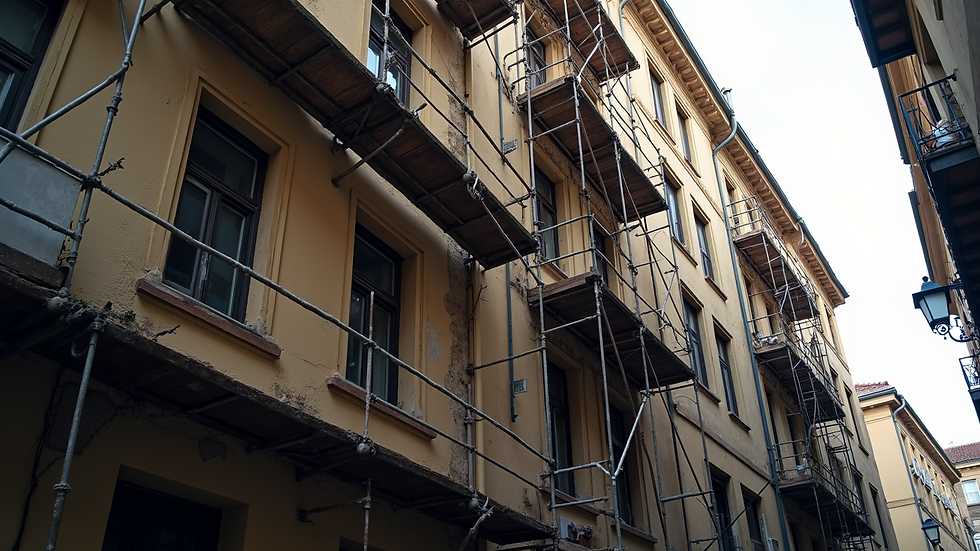The Role of Historical Preservation Contractors
- Restoration expert

- Oct 13
- 4 min read
Preserving historical buildings and landmarks is a vital task that connects us to our past. These structures tell stories of different eras, cultures, and communities. Without proper care, many of these treasures could be lost forever. This is where preservation specialists for history come into play. They ensure that historical sites maintain their integrity while adapting to modern needs.
Understanding Preservation Specialists for History
Preservation specialists for history are professionals trained in the art and science of maintaining and restoring historical structures. Their work goes beyond simple repairs. They study the original materials, construction techniques, and historical context to make informed decisions about restoration.
For example, when restoring a 19th-century courthouse, specialists might analyze old photographs, architectural plans, and even paint samples to match the original colors and textures. This attention to detail helps keep the building authentic and respectful of its heritage.
These specialists often collaborate with architects, historians, and local authorities to ensure that restoration projects meet legal and cultural standards. Their goal is to balance preservation with functionality, allowing historical buildings to serve contemporary purposes without losing their character.

Key Responsibilities of Preservation Specialists for History
The role of preservation specialists for history involves several critical responsibilities:
Assessment and Documentation
Before any work begins, specialists conduct thorough assessments of the building's condition. This includes identifying structural issues, material degradation, and previous alterations. Detailed documentation helps create a restoration plan that respects the building's history.
Material Selection and Conservation
Choosing the right materials is essential. Specialists often source period-appropriate materials or use modern equivalents that mimic the original. Conservation techniques such as cleaning, stabilizing, and repairing original elements are preferred over replacement whenever possible.
Restoration and Repair
Restoration involves repairing damaged parts while maintaining the building's historical integrity. This can include masonry work, wood restoration, window repair, and more. Skilled craftsmanship is crucial to match the original construction quality.
Compliance with Regulations
Many historical buildings are protected by local, state, or national laws. Preservation specialists ensure that all work complies with these regulations, including obtaining necessary permits and following guidelines set by heritage organizations.
Education and Advocacy
Specialists often educate property owners and the public about the importance of preservation. They advocate for the protection of historical sites and may assist in securing funding or grants for restoration projects.
How Preservation Specialists for History Impact Communities
Preservation specialists for history play a significant role in community development and cultural identity. Restored historical buildings can become vibrant centers for tourism, education, and local pride.
For instance, a restored historic theater can host performances and events, attracting visitors and boosting the local economy. Similarly, preserving old homes and neighborhoods helps maintain the unique character of a city, preventing homogenization.
Moreover, these specialists contribute to sustainability by promoting the reuse of existing structures rather than demolition and new construction. This approach reduces waste and conserves resources, aligning with modern environmental goals.

The Importance of Hiring Qualified Historical Preservation Contractors
When undertaking a restoration project, it is crucial to hire experienced historical preservation contractors. These professionals bring specialized knowledge and skills that general contractors may lack.
Qualified contractors understand the nuances of working with fragile materials and historic construction methods. They can identify hidden issues that might compromise the building's stability or authenticity. Their expertise ensures that restoration work is done correctly the first time, saving time and money in the long run.
Additionally, reputable contractors maintain strong relationships with preservation agencies and suppliers of authentic materials. This network facilitates smoother project approvals and access to rare resources.
For example, a project involving a century-old church might require sourcing specific types of stained glass or custom-milled wood. Experienced contractors know where to find these materials and how to install them properly.
Best Practices for Successful Historical Preservation Projects
To achieve the best results in historical preservation, consider the following best practices:
Conduct Comprehensive Research
Gather as much information as possible about the building’s history, architecture, and previous restorations. This knowledge guides decision-making and helps avoid mistakes.
Engage Experts Early
Involve preservation specialists, architects, and engineers from the planning stage. Early collaboration ensures that all aspects of the project align with preservation goals.
Prioritize Preservation Over Replacement
Whenever possible, conserve original materials and features. Replacement should be a last resort and done with materials that match the original in appearance and quality.
Use Appropriate Techniques and Tools
Employ traditional methods and tools compatible with the building’s construction. Modern techniques can sometimes cause damage if not carefully applied.
Maintain Clear Communication
Keep all stakeholders informed throughout the project. Transparency helps manage expectations and fosters community support.
Plan for Long-Term Maintenance
Restoration is not a one-time event. Develop a maintenance plan to protect the building from future deterioration.

Preserving Our Past for Future Generations
The work of preservation specialists for history is essential in safeguarding our cultural heritage. Their expertise ensures that historical buildings continue to tell their stories and enrich our communities.
By supporting restoration projects and hiring qualified professionals, we contribute to a legacy that honors the past while embracing the future. Whether it is a grand public monument or a modest historic home, every preserved structure adds value to our shared history.
Investing in preservation is investing in education, culture, and sustainability. It is a commitment to remembering where we came from and inspiring where we are going.




Comments